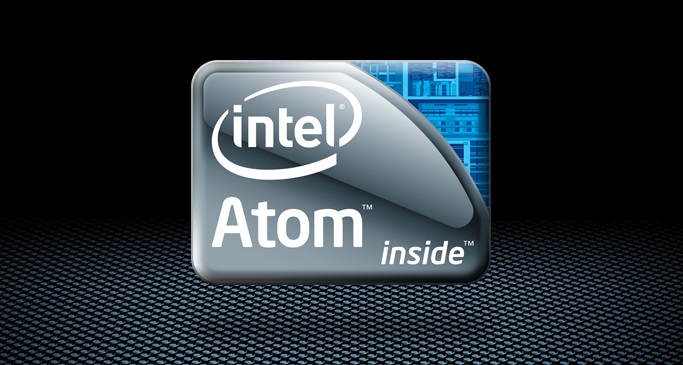Intel Challenges ARM With ‘Silvermont’

Intel argues that its upcoming ‘Silvermont’-based Atom chips will beat ARM on performance and power efficiency
Intel officials, five years after introducing the first low-power Atom chips, are finally bringing a new microarchitecture to the platform, a move they say will introduce performance and power consumption advantages that will significantly exceed anything ARM and its partners can offer.
Now they just have to see if the upcoming systems-on-a-chip (SoCs) with the new “Silvermont” microarchitecture will be enough to convince device makers and consumers to embrace the idea of Intel inside their tablets and smartphones.
Challenging ARM
“We’re breaking the myth that ARM can do things that Intel cannot,” Dadi Perlmutter, executive vice president, general manager of the Intel Architecture Group, and Intel’s chief product officer, said during a 6 May webcast introducing Silvermont.
Silvermont will be found in Intel chips that power everything from servers to PCs to embedded systems, but it’s the low-power and mobile spaces – in particular, smartphones, tablets and microservers, where the chip maker will compete most directly with ARM – where the architecture will succeed or fail.
Intel for several years has been pushing its Atom platform – and to a lesser extent, its Core processors – as the technology that will take the company into the booming mobile space.
The bulk of the smartphones and tablets on the market today are powered by SoCs designed by ARM specifically for mobile devices and built by the likes of Qualcomm, Samsung and Nvidia.
Intel has been trying to drive down the power consumption of its x86-based Atom chips to compete with ARM, and doing so with the original “Bonnell” microarchitecture.
 That will change later this year and early next, when devices powered by the upcoming 22-nanometre “Bay Trail” Atom SoCs for tablets and “Merrifield” chips for smartphones begin coming to market. Silvermont will enable Intel “move into mobile in a big way,” Perlmutter said.
That will change later this year and early next, when devices powered by the upcoming 22-nanometre “Bay Trail” Atom SoCs for tablets and “Merrifield” chips for smartphones begin coming to market. Silvermont will enable Intel “move into mobile in a big way,” Perlmutter said.
‘Avoton’
In addition, Silvermont will be found in the upcoming “Avoton” chips for dense, low-power microservers and “Rangeley” SoCs for such infrastructure systems as switches and routers, both of which will start appearing in the second half of 2013. There also is another as-yet-unnamed SoC on the horizon for infotainment systems.
The giant chip maker also has an aggressive roadmap that will see Silvermont replaced by the 14-nm Airmont next year, and another unnamed 14-nm microarchitecture introduced a year after that.
In a lengthy webcast presentation, Perlmutter and Intel Fellow and Chief Architect Belli Kuttanna outlined the extensive innovations that enable Silvermont to drive up not only the energy efficiencies of the chips, but also the performance.
“The real great news here … is not only have we reduced the power in significant [amounts], but we also [did it] with a significant performance increase,” Perlmutter said. “We know how to do this.”
According to Perlmutter, Atom SoCs with the Silvermont microarchitecture will offer five times lower power consumption and three times the performance of current Atom SoCs. More importantly, against quad-core ARM-based competitors, dual-core Silvermont Atoms for smartphones offered 1.6 times the performance and 2.4 times lower power consumption.
Quad-core Atoms for tablets offered twice the performance and 4.3 times lower power consumption than quad-core ARM chips.
Manufacturing power
Intel officials have argued that the company’s engineering and manufacturing prowess were significant advantages over rival chip makers, including Advanced Micro Devices and ARM. Silvermont exemplifies the argument, Perlmutter and Kuttanna said.
Among the key innovations for Silvermont was the inclusion of Intel’s 3D Tri-gate transistors, first introduced in 2011 for the 22nm “Ivy Bridge” Core chips and now optimised for Silvermont. The transistor architecture helps drive performance and energy-efficiency improvements.
In addition, a new out-of-order execution engine offers greater single-threaded performance by enabling the chip to execute whatever instructions are ready to run, rather than having to wait for each instruction in order.
A new multi-core and system fabric architecture is scalable up to eight cores, while new Intel Architecture instructions offers improved performance as well as virtualisation and security management.
Intel also improved the microarchitecture’s burst technology, enabling the SoC’s CPU to temporarily operate at a faster level based not only on thermal headroom, but also electrical and power-delivery capabilities. In addition, the cores not only share power among each other, but also other components on the SoC, such as the GPU, enabling a greater distribution of power.
Intel’s Kuttanna said the SoCs also are built using two-core building-block modules, with a shared L2 cache up to 1MB and a dedicated point-to-point interface to the SoC fabric.
Scalability
Scaling the SoCs means adding modules, he said. The Intel officials said that with Silvermont, the company’s SoCs will exceed what ARM and its partners can do in terms of performance and energy efficiency, and expect the industry will start turning in its direction.
Perlmutter talked about the increased interest among device makers after hearing about Silvermont and their interest in leveraging the microarchitecture across a range of systems. Kuttanna reflected on the company’s past attempts in the mobile space, and said the company is where it wants to be.
“Now, with a better idea of the mobile space and its requirements, we’re taking advantage of what Intel can do,” he said.
Do you know all about UK tech leader ARM Holdings? Take our quiz!
Originally published on eWeek.